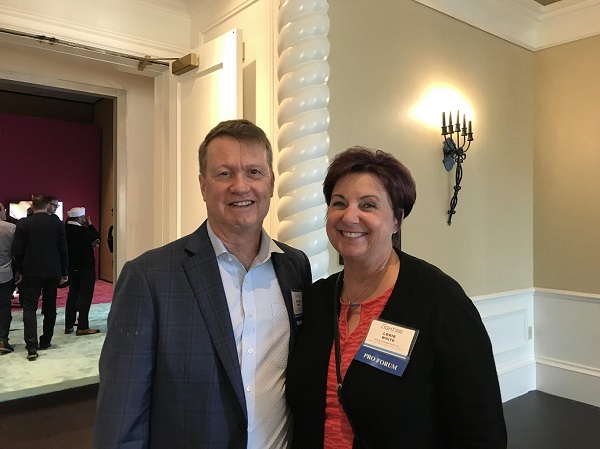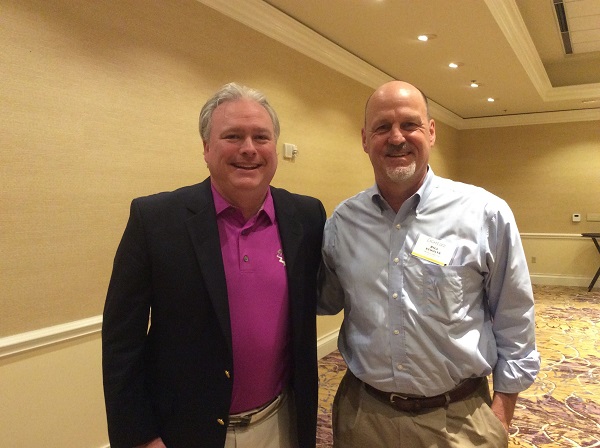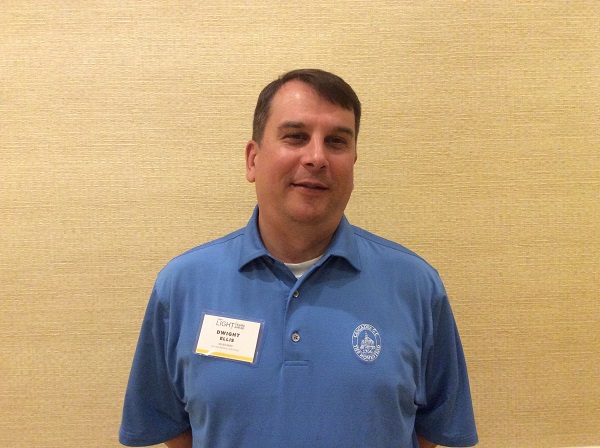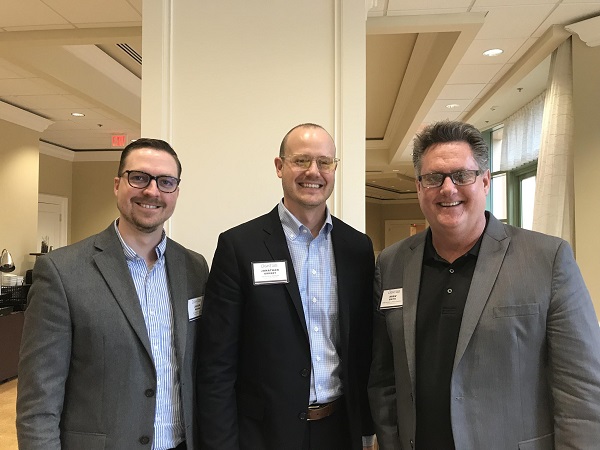By Victoria Alexander
It was all “light years ahead” at this year’s Transitions Academy.
Cal Broker was among the more than 900 invited guests from North and South America to attend the 23rd annual Transitions Academy. This year’s event was held at the JW Marriott Grande Lakes in Orlando, Florida. The theme “Light Years Ahead” was, indeed, appropriate. Chrystel Barranger, president Essilor Photochromics and Transitions Optical, stressed innovation as the company brings higher-tech lenses and more light management solutions to wearers in 2019 and beyond. Among the key announcements:
Better photochromic lenses
Transitions debuted the Signature GEN 8 photochromic lenses, the result of over five years of product research and development. Main benefit: the lenses transition at a fraction of the time of previous generations of lenses. Light sensitivity and light stress may be underappreciated factors in a healthy lifestyle, according to some research.
Contacts that work like photochromic lenses
This was the showstopper unveil. Transitions, in partnership with Johnson & Johnson Vison, debuted Acuvue Oasys photochromic contact lenses. The new lenses are light-sensitive, vision-correcting contacts that contain filters that sense the amount of light entering the eye and darken or lighten accordingly. Acuvue Oasys, which have been in the works for over a decade, received FDA clearance in April. TIME magazine named them one of the best inventions of 2018.
Updated educational website for employers and employees
Vision benefits education can be easy if you get people to healthysightworkingforyou.org. The newly updated website provides a range of educational resources and quantitative tools to reinforce the value of enrolling in premium vision plans.
What else? Well, we tracked down a number of attendees to ask a few burning questions about issues that matter to our readers. Here’s what we learned…

Melody Healy, Chief Operating Officer, VSP Vision Care.
CB: What’s different today in the vision benefits world?
“I’ve worked in vision benefits for 22 years,” said Healy. “Right now, the cost of health care and how to cut costs dominates all benefits conversations. The good news, though, is that vision benefits can be the bright spot in this conversation. You can offer a plan that has more coverage and is still affordable. People can use their benefits and walk out of the eye doctor with a better pair of glasses. It’s something tangible that most people immediately recognize as improving their lives.” By the way, keep an eye on VSP. Healy says the company is expanding product offerings, especially for groups under 1,000.

Eric White, OD, and Lorie White of Complete Family Vision Care, San Diego, California.
CB: What’s your biggest concern with patients and vision benefits?
“My biggest concern right now is that patients need more education about doctor-dispensed eye wear,” said Dr. White. Many patients erroneously believe they can see an eye doctor for their prescription and then order the very same glasses they might get from a doctor online or from Costco. “They don’t realize that the cheaper products aren’t just cheaper. They’re inferior,” said Dr. White. Lorie White said she spends a fair amount of time just chasing down a patient’s vision benefits. “It would be great if patients knew more about their vision benefits, or even knew if they had them. But, then again, I’ve gotten good at finding the benefits and letting them know what their coverage is.” Lorie said she’s found it helps to frame the benefit correctly, though. “I show them how much they would pay if they didn’t have vision benefits versus how much they are paying with benefits. It makes them truly appreciate their coverage.”

Brokers Dan Pennington and Bill Schulte attended on behalf of Anthem.
CB: What did you learn by coming to Transitions Academy?
When you’re talking about population health management, vision can become a bigger component, said Dan Pennington. “There’s a real conversation to be had. Vision is an economical benefit, but we need to ask: What can we do with vision to bring down medical costs?” Pennington said vision providers can see certain aspects of the health of members before other health care providers might. Diabetes, high cholesterol and other disorders can be identified early in an eye exam. “So we need to think about building in programs to incentivize employees to get their eye exams. When you frame the vision conversation this way, suddenly vision becomes a key leg of the benefits stool.” In other words, the vision conversation can become a really important four minutes.
Schulte was impressed that photochromic lens technology has come so far and that light management has been linked to employee productivity, health and stress. “There are now lenses that work well and change quickly so this gives people the ability to easily filter and screen harmful light,” he said. Again, more to talk about in those four minutes!

San Jose, California, eye doc William To spoke on a morning panel. Find Dr. To on Instagram @TheTravelingOD
CB: How can doctors improve the vision benefits picture?
“I’m always surprised that eye doctors don’t recognize a need to have a relationship with benefits providers. Like anything else, a relationship with good communication makes everyone happier,” said Dr. To. He keeps in contact with benefits companies so he can understand changes in reimbursement and how to communicate benefits very quickly to his patients. He admits, however, that since he’s practicing in Silicon Valley many of his patients are privy to extremely rich eyewear plans. “Some of my patients have plans with all the bells and whistles — including premiums lenses and three pairs of glasses every year,” said Dr. To.

Photo caption: Dwight Ellis, sales executive, USI Insurance Services.
CB: What’s the biggest obstacle for brokers who want their clients to embrace rich vision benefits?
“I think that employees need to know more about their vision plans. For example, many people don’t realize that Anthem plans cover photochromic lenses completely for kids. But I also think that the people in charge of benefits need to be educated about some of the changes in eyewear. If there are products out there that offer more quality and impact health or well-being, they need to understand why these products are important and what they are paying for. If I could get this across to them in a quick, simple demo that would help me sell the benefit.”

Transitions key account managers Jacob Mann and Jonathan Ormsby with Drew Smith, director of North American channels.
CB: Once the public is made aware of Oasys, insurance agents and brokers will certainly be fielding calls about the coverage for these lenses. What do we know right now?
“For now, the Oasys lenses are covered the same as any Acuvue contacts,” said Drew Smith. CB couldn’t help but ask a follow-up: Does a company like Transitions have single payer concerns? Everyone is watching the issue, according to Jonathan Ormsby, but realistically it shouldn’t impact a company like Transitions as much as providers, insurers and benefits folks. “What we offer will still be accessible. Premium lenses aren’t in the same cost league as, for example, a medical treatment that wouldn’t be possible without good insurance coverage.” Still, employees want rich vision coverage. Time and again benefits pros say that when employees are given options between vision plans with less coverage or more, they opt for the higher benefits. “They are willing to pay more for coverage of premium products because they see the value right away,” said Ormsby.
